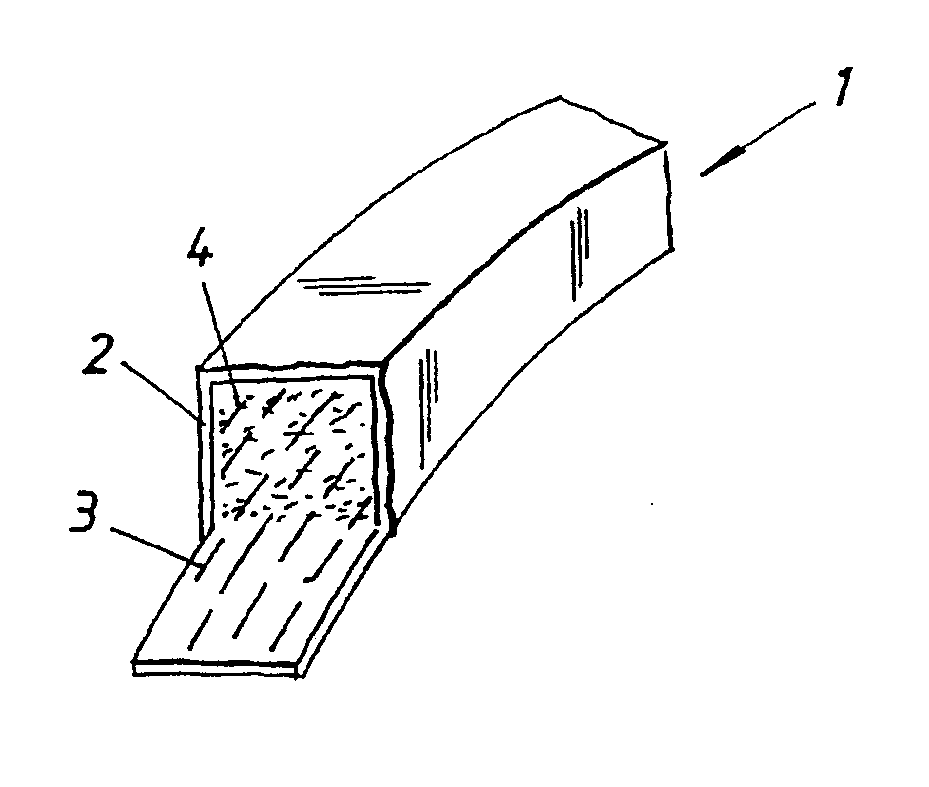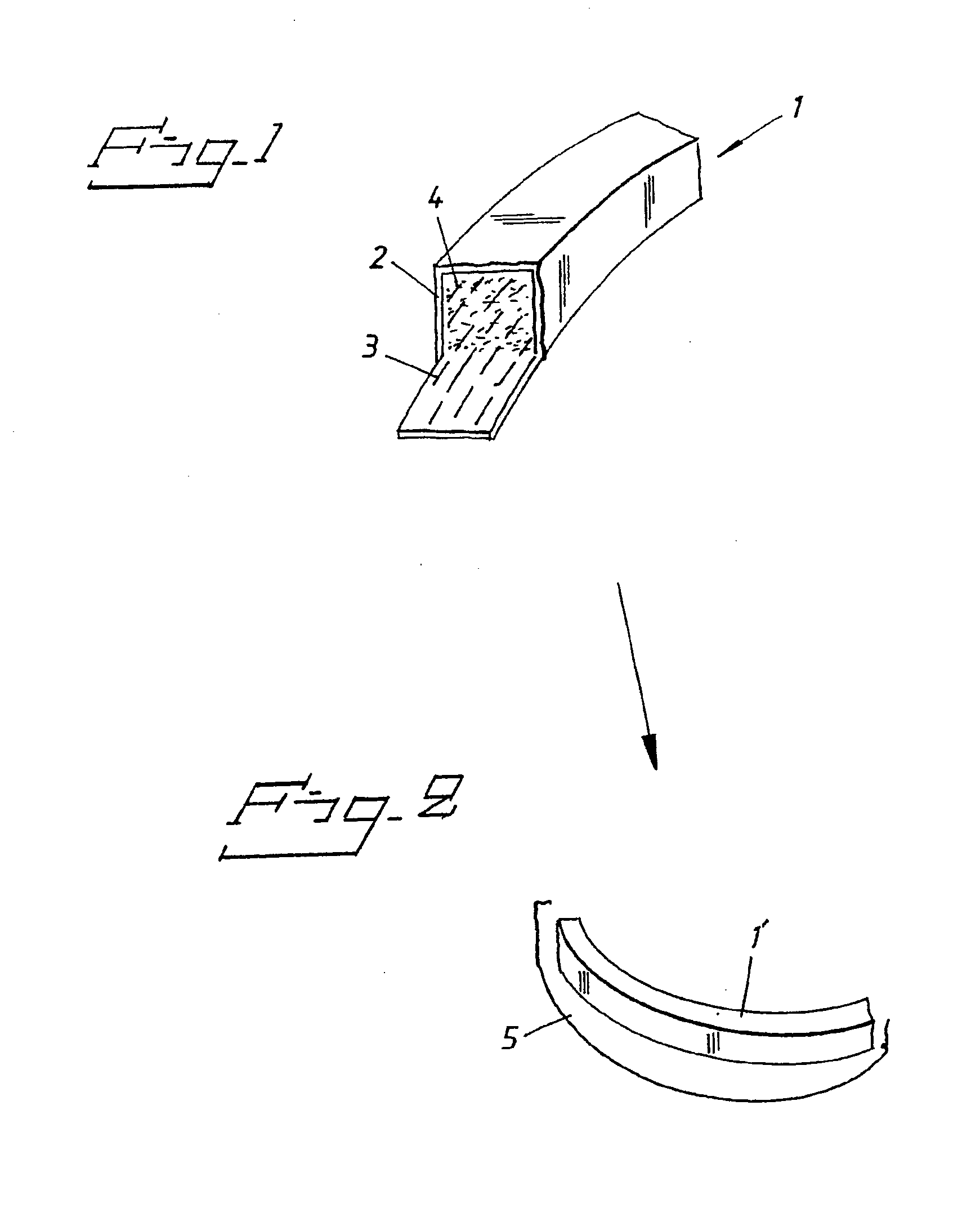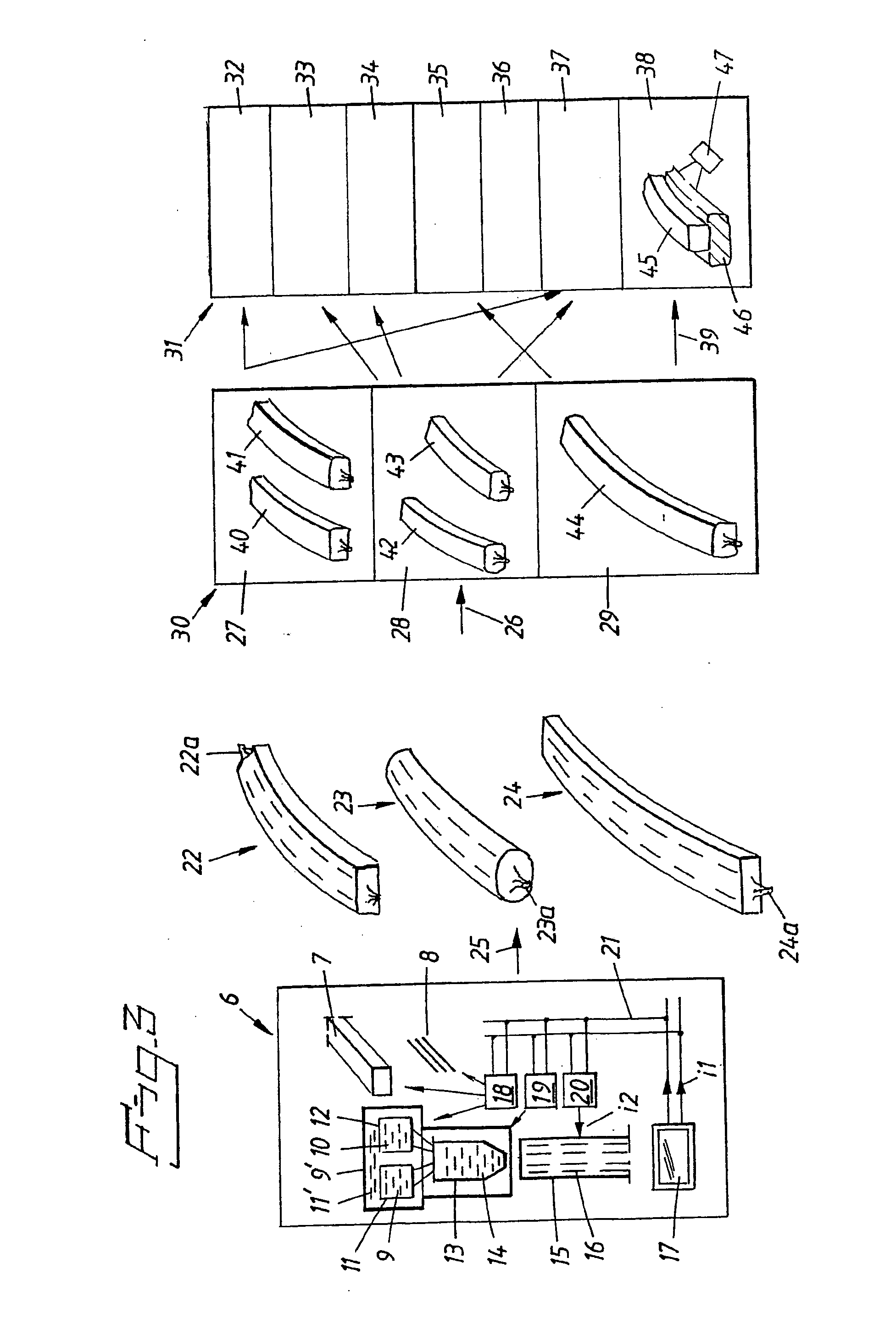Arrangement for producing a unit for a dental bridge construction or template therefor
a technology for dental bridges and units, applied in the field of dental bridge construction or template arrangements, can solve the problems of difficult to achieve a guaranteed wetting of carbon fibers, allergic reactions of the personnel involved, and difficulty in handling on si
- Summary
- Abstract
- Description
- Claims
- Application Information
AI Technical Summary
Benefits of technology
Problems solved by technology
Method used
Image
Examples
Embodiment Construction
[0018] In FIG. 1, a unit is designated by 1. The unit 1 comprises a tube 2, for example a latex tube 2, in which carbon fibers 3 and matrix material 4 have been applied. The unit 1 can have a pre-formed arch shape in accordance with FIG. 1. In one illustrative embodiment, the tube 2 can consist of a latex tube 2 which can be blue in color, and the unit 1 can be shaped as a dental arch or dental arch part or an arch template. The wall of the latex tube 2 can be 0.5 mm thick, for example, and, in connection with its application in this dental context, will be pointed with one or more perforating tips. The latex tube 2 holds the carbon fiber and the matrix material in place. With the aid of silicone castings (not shown specifically), which are mounted on the outside of the latex tube 2 or of the finished plastic model or of the template, the desired shape can be obtained in accordance with the prior art. Reference is made inter alia to the abovementioned patent specifications. With the...
PUM
| Property | Measurement | Unit |
|---|---|---|
| Temperature | aaaaa | aaaaa |
| Temperature | aaaaa | aaaaa |
| Temperature | aaaaa | aaaaa |
Abstract
Description
Claims
Application Information
 Login to View More
Login to View More - R&D
- Intellectual Property
- Life Sciences
- Materials
- Tech Scout
- Unparalleled Data Quality
- Higher Quality Content
- 60% Fewer Hallucinations
Browse by: Latest US Patents, China's latest patents, Technical Efficacy Thesaurus, Application Domain, Technology Topic, Popular Technical Reports.
© 2025 PatSnap. All rights reserved.Legal|Privacy policy|Modern Slavery Act Transparency Statement|Sitemap|About US| Contact US: help@patsnap.com



